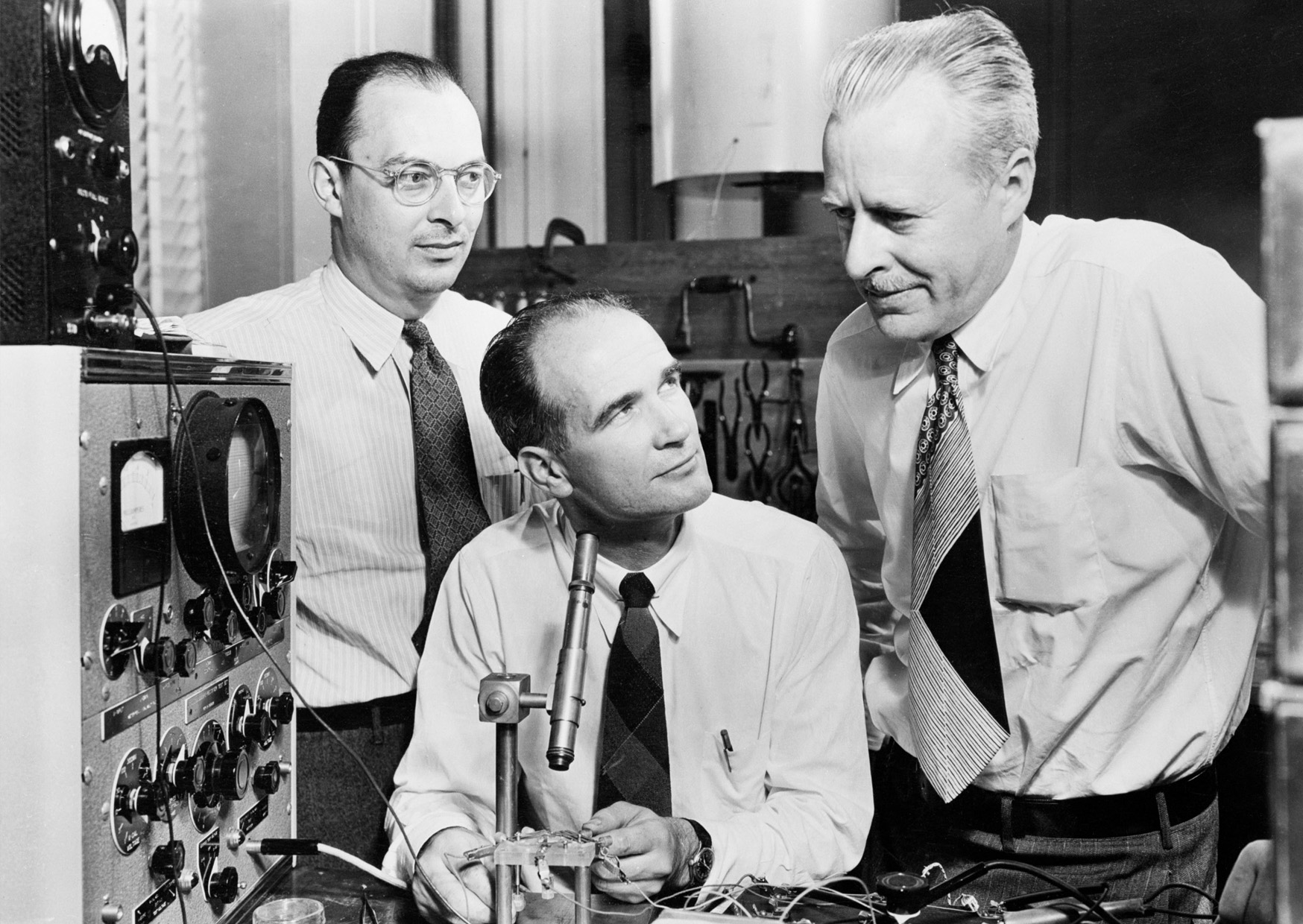History of the Transistor
The crucial component of an electronic device is a controllable valve that lets a weak signal control a much larger flow much as a faucet controls the flow of water. At one time the controllable valve used in electronic circuits was the vacuum tube. The vacuum tube worked but it was bulky and used a lot of electrical power that ended up as heat which shortened the life of the tube itself. The transistor was a much more elegant solution to the needs of electronics. The transistor is small and uses much, much less power than the vacuum tube. Because it uses so little power there is little heat to dissipate and the transistor does not fail as quickly as does a vacuum tube.
The transistor was successfully demonstrated on December 23, 1947 at Bell Laboratories in Murray Hill, New Jersey. Bell Labs is the research arm of American Telephone and Telegraph (AT&T). The three individuals credited with the invention of the transistor were William Shockley, John Bardeen and Walter Brattain. William Shockley played a quite different role in the invention than the other two. Shockley had been working on the theory of such a device for more than ten years. While he could work out the theory successfully but after eight years of trying he could not build a working model. Bardeen and Brattain were called in to handle the engineering and development, which they did in the relatively short time of two years, to the consternation of Shockley. Shockley, as their supervisor, shared in the glory. What Bardeen and Brattain had created was the “point-contact“ transistor. Shockley subsequently designed a new type of transistor called the „bipolar“ transistor which was superior to the point- contact type and replaced it. Thus the transistor was, in large part, Shockley's creation.

Zdroj
Otázky:
- Kdo a jak se podílel na vynalezení tranzistoru?
- Zjistěte, za kolik let po zveřejnění vynálezu získali jeho autoři Nobelovu cenu.
- Jaké jsou přednosti tranzistoru oproti vakuovým elektronkám?
- Vysvětlete vlastními slovy, co znamená „controllable valve that lets a weak signal control a much larger flow“.
- Leží Bellovy laboratoře ve slavném Silicon Valley?

